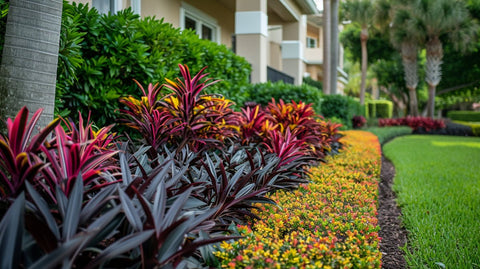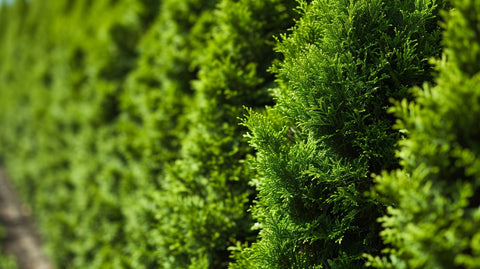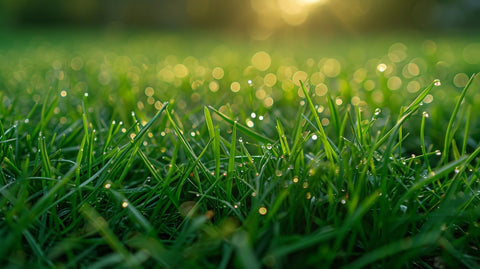florida bushes
Introduction
Welcome to our blog post on the importance of landscaping in residential areas, with a particular focus on the role of Florida bushes. In this article, we will explore the various types of Florida bushes commonly found in the region, their benefits in landscaping, and provide tips on caring for these beautiful plants. Whether you're a homeowner or a gardening enthusiast, this comprehensive guide will help you create stunning outdoor spaces that are both aesthetically pleasing and environmentally beneficial.
Types of Florida Bushes
1. Common native bushes found in Florida
Florida is home to a diverse range of native bushes that are well-adapted to the region's climate and soil conditions. Some popular examples include:
Saw Palmetto

The Saw Palmetto bush is a staple of the Florida landscape. Known for its tough and fan-shaped leaves, this bush not only adds a touch of natural beauty to your garden but also provides an important habitat for wildlife.
Yaupon Holly
The Yaupon Holly bush is a versatile native plant that thrives in various soil types, including sandy and wet areas. With its glossy foliage and vibrant red berries, it adds a pop of color to any landscape while attracting birds and pollinators.
Firebush

The Firebush, as the name suggests, offers fiery-red tubular flowers that are highly attractive to butterflies and hummingbirds. This fast-growing bush is an excellent choice for adding a burst of vibrant color to your garden while supporting local wildlife.
2. Non-native bushes adapted to Florida climate
In addition to native varieties, there are several non-native bushes that have successfully adapted to Florida's climate and are frequently used in landscaping. Some popular options include:
Oleander Ice Pink (Nerium Oleander)

Oleander bushes are known for their showy flowers and long blooming period. They come in a variety of colors, including pink, white, and red, and can serve as a striking focal point in any landscape design. However, it's important to note that all parts of the Oleander plant are toxic if ingested, so caution should be exercised when planting in areas frequented by pets or children.
Bougainvillea Bush (Bougainvillea 'Sun Down Orange')

The Bougainvillea bush is famous for its vibrant bracts, which are often mistaken for flowers. Available in various shades of pink, purple, red, and orange, these hardy bushes thrive in Florida's warm climate, adding a tropical flair to any garden.
Firecracker Red (Russelia Equisetiformis)

The Firecracker Plant, also known as the Russelia equisetiformis, is a cascading bush that produces clusters of tube-shaped red or orange flowers. Its vibrant blooms and delicate foliage make it an excellent choice for ground cover or hanging baskets.
Benefits of Florida Bushes in Landscaping

A. Environmental benefits
1. Attracting native birds and pollinators
Florida bushes, both native and adapted varieties, play a crucial role in supporting local wildlife. Their vibrant flowers and nectar-rich blooms attract a wide range of birds, bees, and butterflies, contributing to the overall biodiversity of your garden.
2. Providing shade and reducing heat island effect
Florida's long, hot summers can be unforgiving, but strategically placed bushes can offer much-needed shade to your outdoor spaces. This not only creates a comfortable environment for you to relax in but also helps to reduce the urban heat island effect, where cities become significantly hotter than surrounding rural areas.
B. Aesthetical benefits
1. Colorful flowers and foliage
One of the primary reasons people incorporate bushes into their landscaping is for the vibrant colors they bring. From the fiery blooms of the Firebush to the delicate shades of the Bougainvillea, these bushes can transform any garden into a visual masterpiece.
2. Different shapes and sizes to enhance visual appeal
Florida offers a wide variety of bush options, each with its own unique shape and size. This diversity allows you to play with different heights, textures, and forms, creating visual interest and adding depth to your landscape design.
C. Functionality in landscaping
1. Creating natural privacy barriers
Strategically planting dense, evergreen bushes can serve as natural privacy screens, shielding your outdoor spaces from prying eyes. Options like Oleander and Yaupon Holly, with their dense foliage, are particularly effective in creating private and tranquil areas within your garden.
2. Acting as windbreakers
Florida's coastal regions often experience strong winds, but with the right choice of bushes, you can create windbreaks that protect your garden and outdoor furniture. Bushes such as Saw Palmetto and Firecracker Plant can act as effective wind blockers, helping to reduce wind damage and maintain the integrity of your garden.
3. Preventing soil erosion
Florida's sandy soil is susceptible to erosion, especially during heavy rains or storms. By planting bushes with extensive root systems, you can help stabilize the soil and prevent erosion, ensuring the health and longevity of your garden.
How to Care for Florida Bushes

A. Watering and irrigation needs
Proper watering is essential for the health and vitality of Florida bushes. While the precise watering requirements may vary depending on the specific bush, it's generally recommended to water deeply and infrequently to encourage deep root growth. Monitor the soil moisture regularly and adjust watering accordingly, particularly during drought periods.
B. Sunlight and shade requirements
Most Florida bushes thrive in full sun or partial shade, so it's important to choose the right spot for planting. Read the specific recommendations for each bush to determine its sunlight requirements. If you have limited sun exposure in your garden, consider choosing bush varieties that are well-suited to shady conditions.
C. Proper pruning techniques
Regular pruning is essential to maintain the shape, size, and overall health of your Florida bushes. Pruning should be carried out during the dormant season, typically in late winter or early spring, to promote new growth. It's important to use proper pruning techniques, such as making clean cuts and removing dead or diseased branches, to avoid damaging the plant.
D. Fertilization guidelines
Florida bushes typically benefit from regular fertilization to ensure they receive the necessary nutrients for optimal growth. Select a fertilizer specifically formulated for bushes and follow the instructions for application rates and frequency. Be mindful not to over-fertilize, as this can lead to excessive foliage growth at the expense of flowers and overall plant health.
Common Issues with Florida Bushes and Solutions

A. Pest and disease management
Like any plants, Florida bushes are susceptible to pests and diseases. Common issues include aphids, scale insects, and fungal infections. Regularly inspect your bushes for any signs of damage or infestation, and promptly address them using environmentally-friendly pest control methods or consult with a professional for guidance.
B. Dealing with extreme weather conditions
Florida's climate can be extreme, with intense heat, strong winds, and occasional hurricanes. To protect your bushes, consider installing windbreaks or using stakes for support during storms. Providing ample water during periods of drought and mulching around the base of your bushes can also help to mitigate the effects of extreme weather conditions.
C. Preventing overgrowth and crowding
Some Florida bushes have a tendency to overgrow and become crowded, which can negatively impact their health and aesthetics. Regular pruning and thinning can help prevent overcrowding, allowing each bush to receive adequate sunlight, air circulation, and nutrients to thrive.
Landscaping Ideas Incorporating Florida Bushes
A. Creating a tropical-themed garden
Florida's unique climate provides the perfect opportunity to create a tropical-themed garden. Combine different types of Florida bushes with palm trees, ferns, and tropical flowers to create a lush and vibrant oasis right in your backyard. Don't forget to incorporate elements like water features and colorful patio furniture to complete the tropical look.
B. Mixing and matching bushes with other plants
Incorporating Florida bushes into mixed plant beds can add depth and texture to your landscape. Combine bushes of varying heights, colors, and textures with perennials, ground covers, or ornamental grasses to create visually stunning compositions. Consider the blooming seasons and color palettes of different plants to ensure a balanced and harmonious overall design.
C. Using bushes to create focal points or borders
Florida bushes can be used strategically to create focal points or borders in your garden. Place larger, bushier varieties as eye-catching centerpieces or anchors, surrounded by smaller flowering bushes or ornamental grasses. This arrangement adds visual interest and structure to your landscape while directing the flow and movement of the eyes.
Conclusion
Florida bushes play a vital role in residential landscaping, providing both environmental benefits and aesthetic appeal. From attracting native birds and pollinators to creating natural privacy barriers, these versatile plants offer numerous advantages for homeowners and garden enthusiasts alike. By selecting the appropriate Florida bushes for your landscape, providing proper care, and utilizing creative design ideas, you can transform your outdoor spaces into stunning, functional, and environmentally-friendly havens.






























Comments (0)
There are no comments for this article. Be the first one to leave a message!